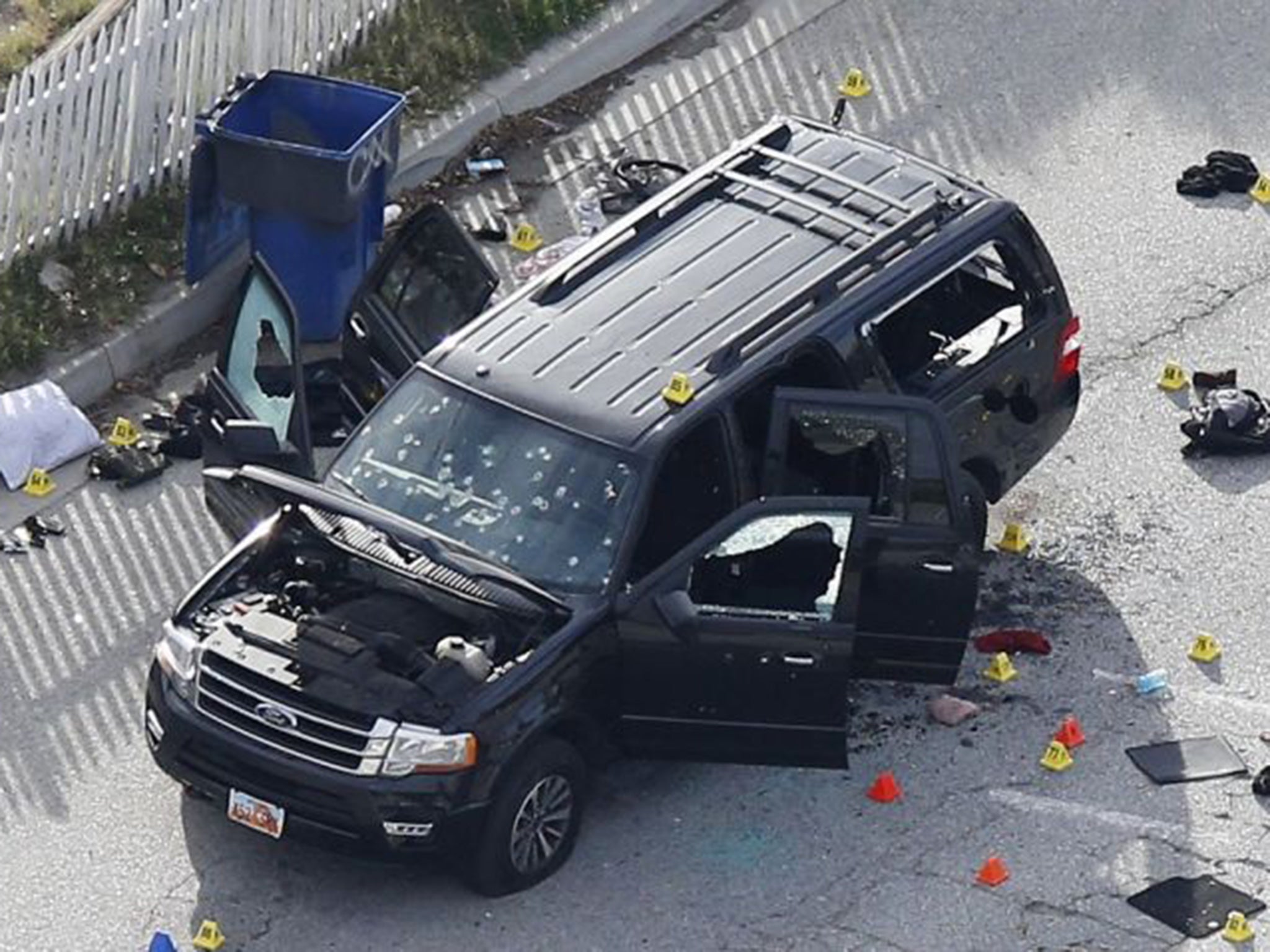San Bernardino struggles to explain surge in everyday gun violence since 2015 mass shooting
The California city is now expected to see more murders in 2016 than in any year since 1995, with a homicide rate far higher than Chicago's

Your support helps us to tell the story
From reproductive rights to climate change to Big Tech, The Independent is on the ground when the story is developing. Whether it's investigating the financials of Elon Musk's pro-Trump PAC or producing our latest documentary, 'The A Word', which shines a light on the American women fighting for reproductive rights, we know how important it is to parse out the facts from the messaging.
At such a critical moment in US history, we need reporters on the ground. Your donation allows us to keep sending journalists to speak to both sides of the story.
The Independent is trusted by Americans across the entire political spectrum. And unlike many other quality news outlets, we choose not to lock Americans out of our reporting and analysis with paywalls. We believe quality journalism should be available to everyone, paid for by those who can afford it.
Your support makes all the difference.San Bernardino achieved international notoriety last December, when 14 people were killed in an Isis-inspired mass shooting at a local business centre. But the California city has long had one of the state’s highest murder rates and, in the months since that attack, San Bernardino’s streets have seen a surge in everyday gun violence that police and residents are struggling to explain.
By late April, just over 100 days into 2016, more people in the troubled city had been shot dead than were killed in the December 2014 massacre. According to a new report by the Los Angeles Times, by the end of August there had been 150 shootings and 47 homicides in San Bernardino this year, compared to 44 overall in 2015 – including those who perished in the mass shooting.
The city is now expected to see more murders in 2016 than in any year since 1995, when 67 people were killed. San Bernardino has approximately 216,000 residents but has suffered approximately the same number of homicides this year as Oakland, which has more than 410,000. On top of the 47 homicides, three people have also been shot dead by police.
If the drumbeat of deaths continues over the coming months, the city will see out 2016 with a homicide rate of 31 per 100,000 residents. Chicago, where the epidemic of gun violence has received widespread attention, had a rate of 18 homicides per 100,000 residents last year. Almost half of those killed in San Bernardino this year have been black, though black people make up just 14 per cent of its population.
There are mixed explanations for the sudden spike in violence. San Bernardino declared bankruptcy in 2012 and its police department has been decimated by budget cuts. There are approximately 215 police officers serving in the city, compared to more than 340 in 2008. Fewer than 40 per cent of this year’s murders have been solved.
The decline of employment opportunities and cuts to other services may also have contributed to the violence, the LA Times reported, with some residents blaming small but significant issues such as the lack of working street lights in some neighbourhoods.
Yet the economic situation has been dire for several years, so that alone cannot explain the 2016 surge. San Bernardino Police Chief Jarrod Burguan, who told the paper that he needs around 300 officers to effectively serve the city, pointed to state measures that have reduced sentences for certain drug-related and other crimes, meaning criminals return to the streets with greater frequency.
Join our commenting forum
Join thought-provoking conversations, follow other Independent readers and see their replies
Comments